
Flood is a monitoring service for various torrent clients like qBittorrent, Transmission, rTorrent, Deluge. It’s a Node.js service that communicates with your favorite torrent client and serves a decent web UI for administration. In this step by step guide I will show you how to install Flood on your Synology NAS using Docker.
STEP 1
Please Support My work by Making a Donation.
STEP 2
Install Container Manager via Synology “Package Center”. If you run an older DSM version (under 7.2), search for Docker instead of Container Manager.
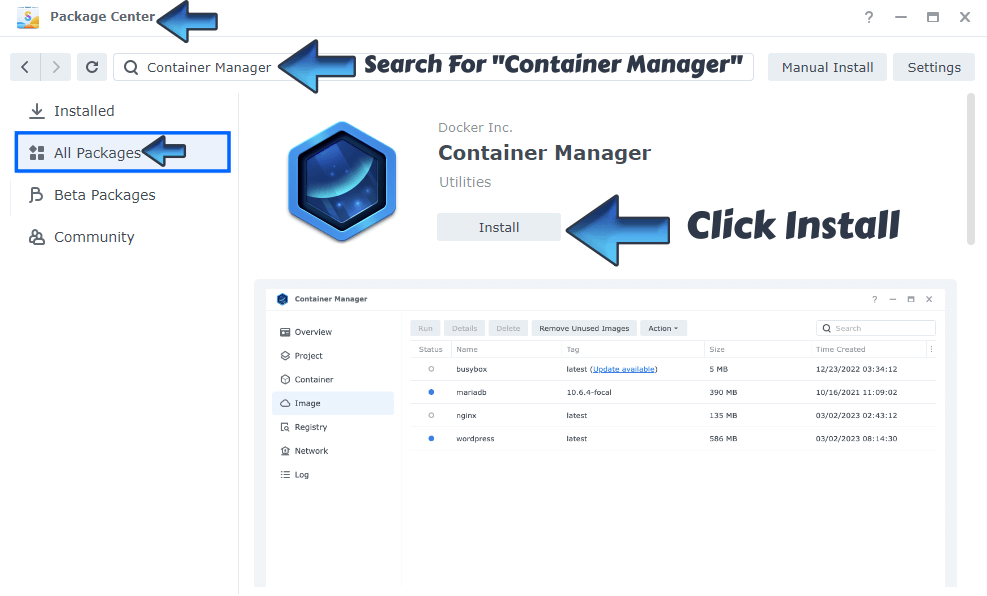
STEP 3
Go to Control Panel / Task Scheduler / Create / Scheduled Task / User-defined script. Follow the instructions in the images below.
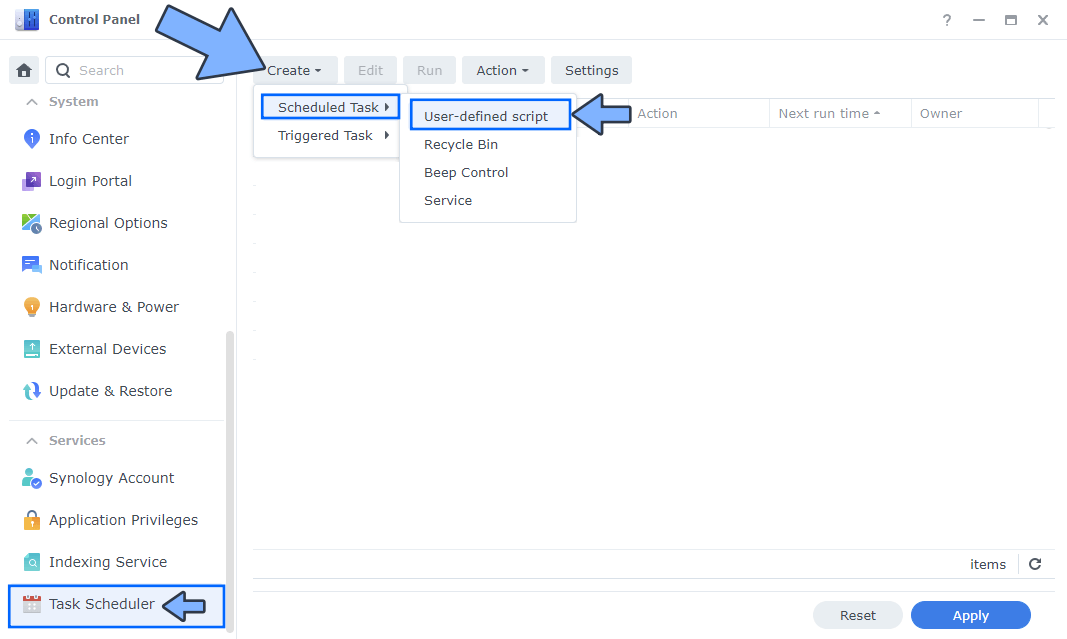
STEP 4
Once you click on User-defined script a new window will open. Follow the instructions below:
- General: In the Task field type in Install Flood. Uncheck “Enabled” option. Select root User.
- Schedule: Select Run on the following date then select “Do not repeat“.
- Task Settings: Check “Send run details by email“, add your email then copy paste the code below in the Run command area. After that click OK.
docker run -d --name=flood \ -p 5245:3000 \ --restart always \ jesec/flood:master
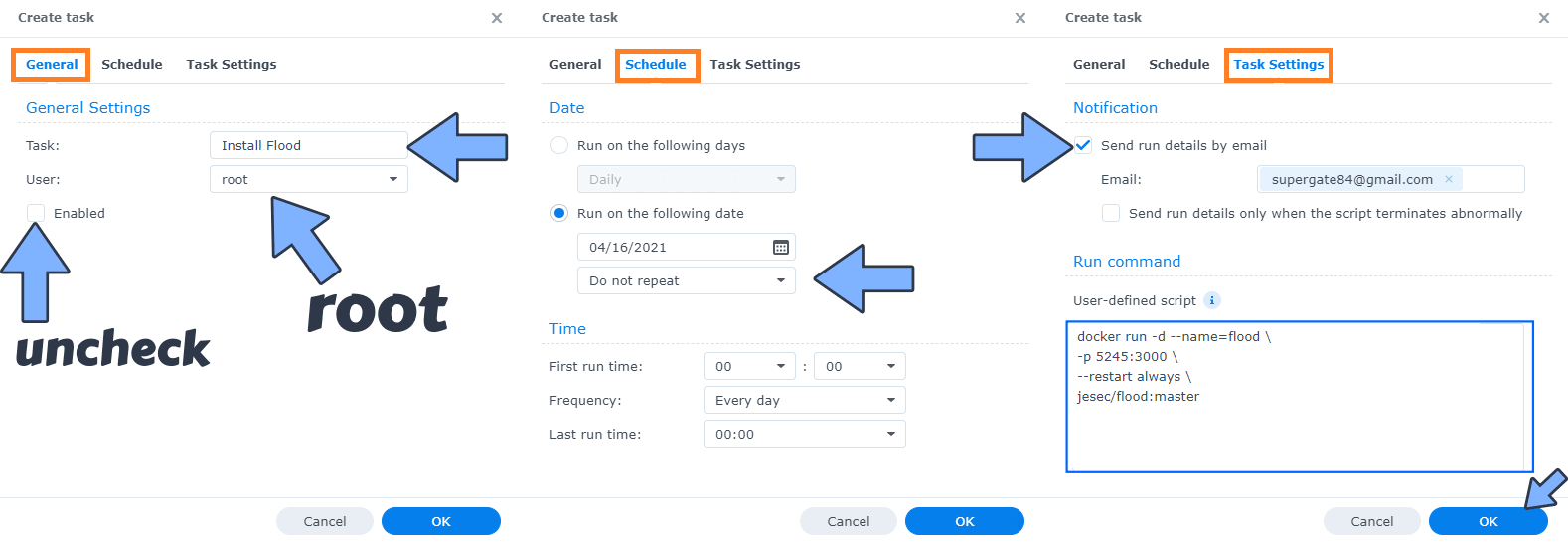
STEP 5
After you click OK on STEP 4 a new warning pop up window will open. Click OK.

After you click OK, type in your DSM Password then click Submit. Follow the instructions in the image below.

STEP 6
After you click Submit on STEP 5, select your “Install Flood” Task then click the “Run” tab. You will be asked to run Install Flood – click OK. Follow the instructions in the image below.
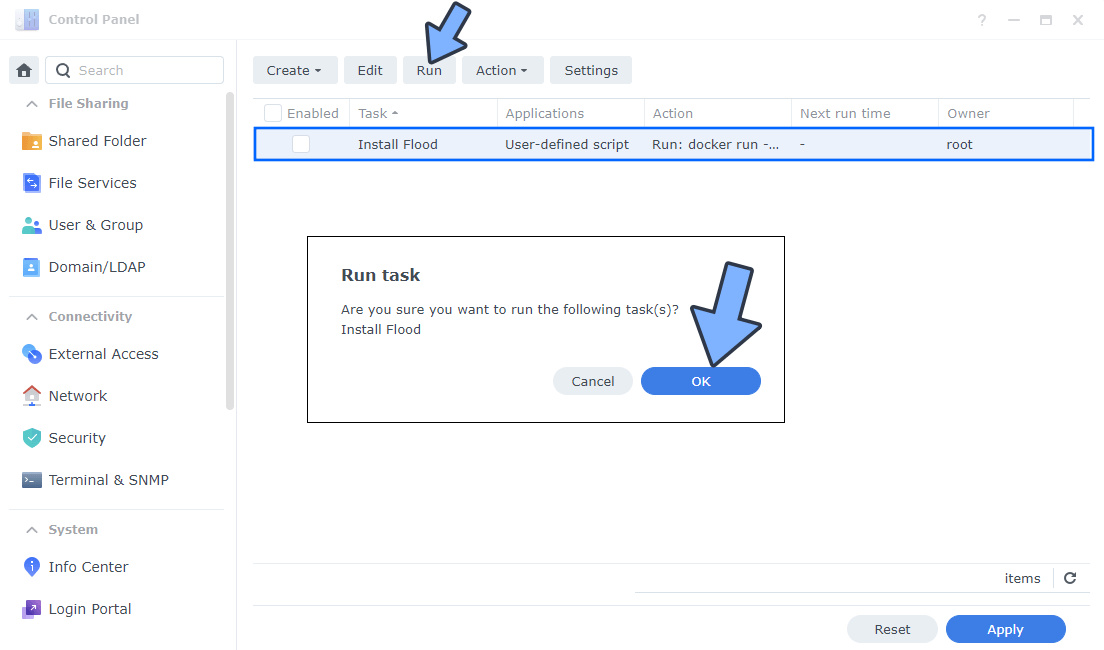
STEP 7
🟢Please Support My work by Making a Donation. Almost 99,9% of the people that install something using my guides forget to support my work, or just ignore STEP 1. I’ve been very honest about this aspect of my work since the beginning: I don’t run any ADS, I don’t require subscriptions, paid or otherwise, I don’t collect IPs, emails, and I don’t have any referral links from Amazon or other merchants. I also don’t have any POP-UPs or COOKIES. I have repeatedly been told over the years how much I have contributed to the community. It’s something I love doing and have been honest about my passion since the beginning. But I also Need The Community to Support me Back to be able to continue doing this work.
STEP 8
The installation process can take up to a few seconds/minutes. It will depend on your Internet speed connection. Now open your browser and type in http://Synology-ip-address:5245 Create your own Username and Password. Add your qBittorrent instance (Client) (see STEP 9 in my qBittorrent guide. Your NAS IP followed by :9865) or other torrent from the drop-down list. Click Create Account. Follow the instructions in the image below.
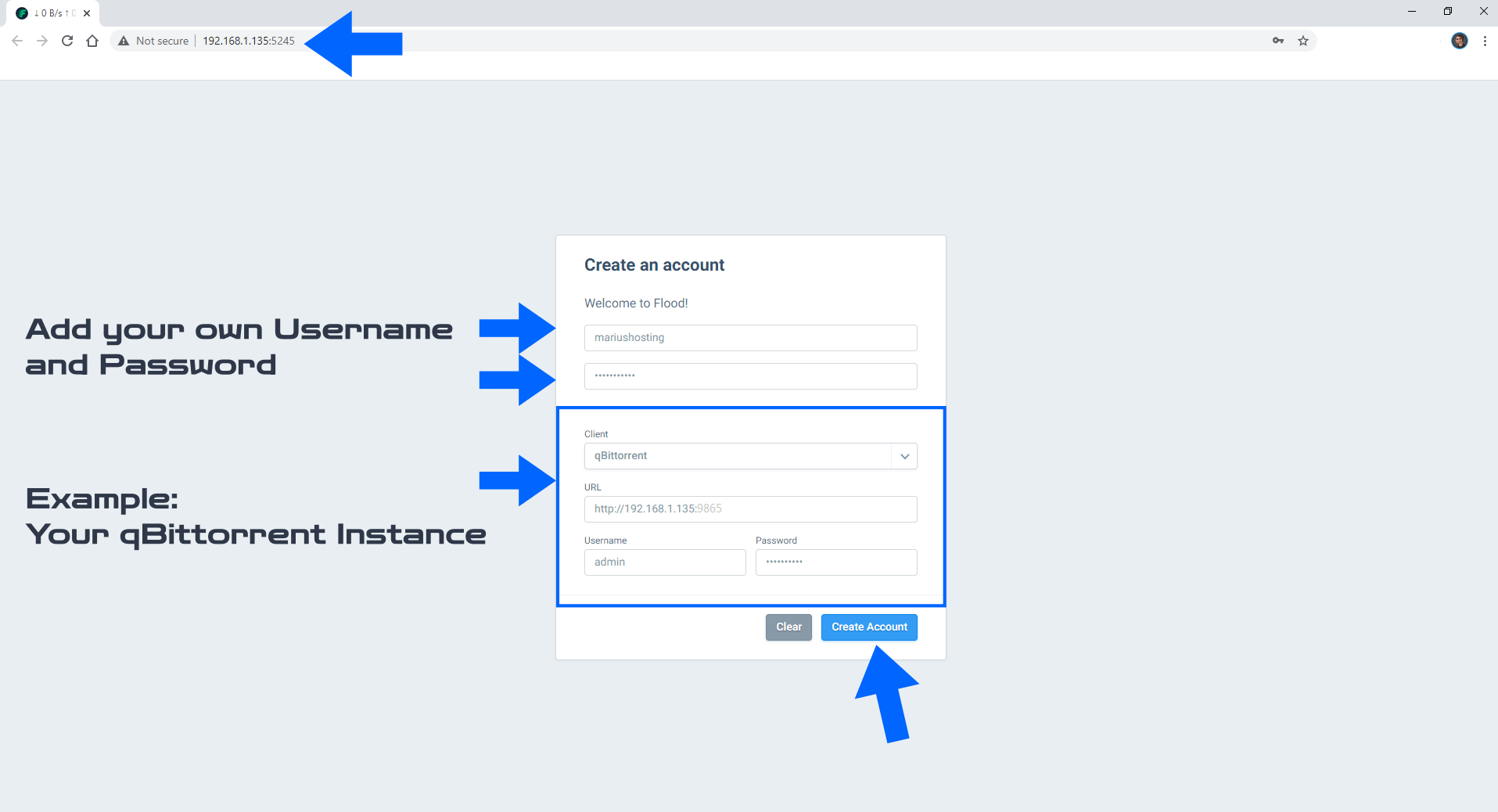
STEP 9
Start to download any torrent file you want using qBittorrent. Follow the instructions in the image below.
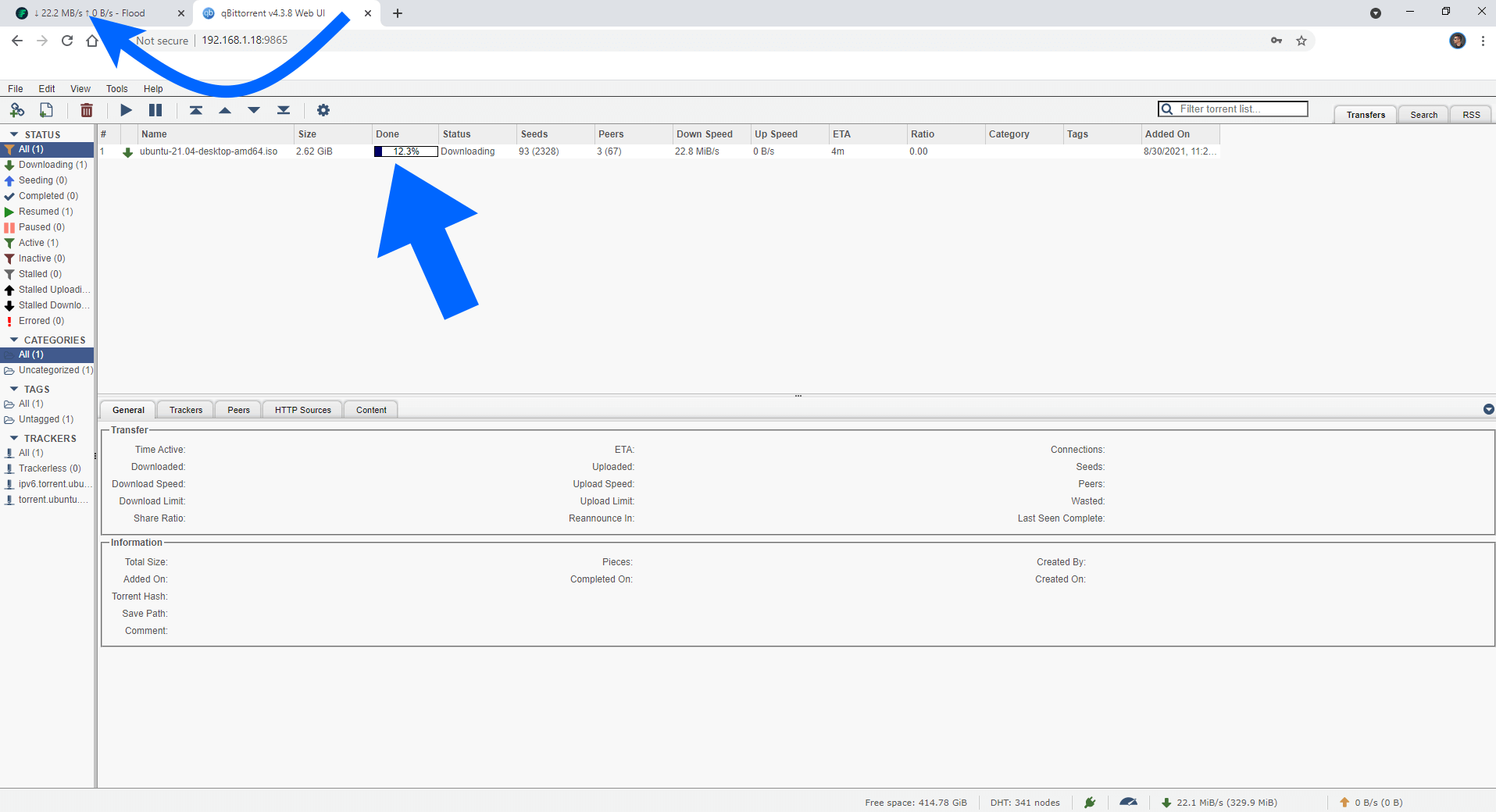
STEP 10
After you start to download your torrent file using qBittorrent at STEP 9, open the Flood docker instance at http://Synology-ip-address:5245 to see the download progress using Flood’s futuristic GUI.
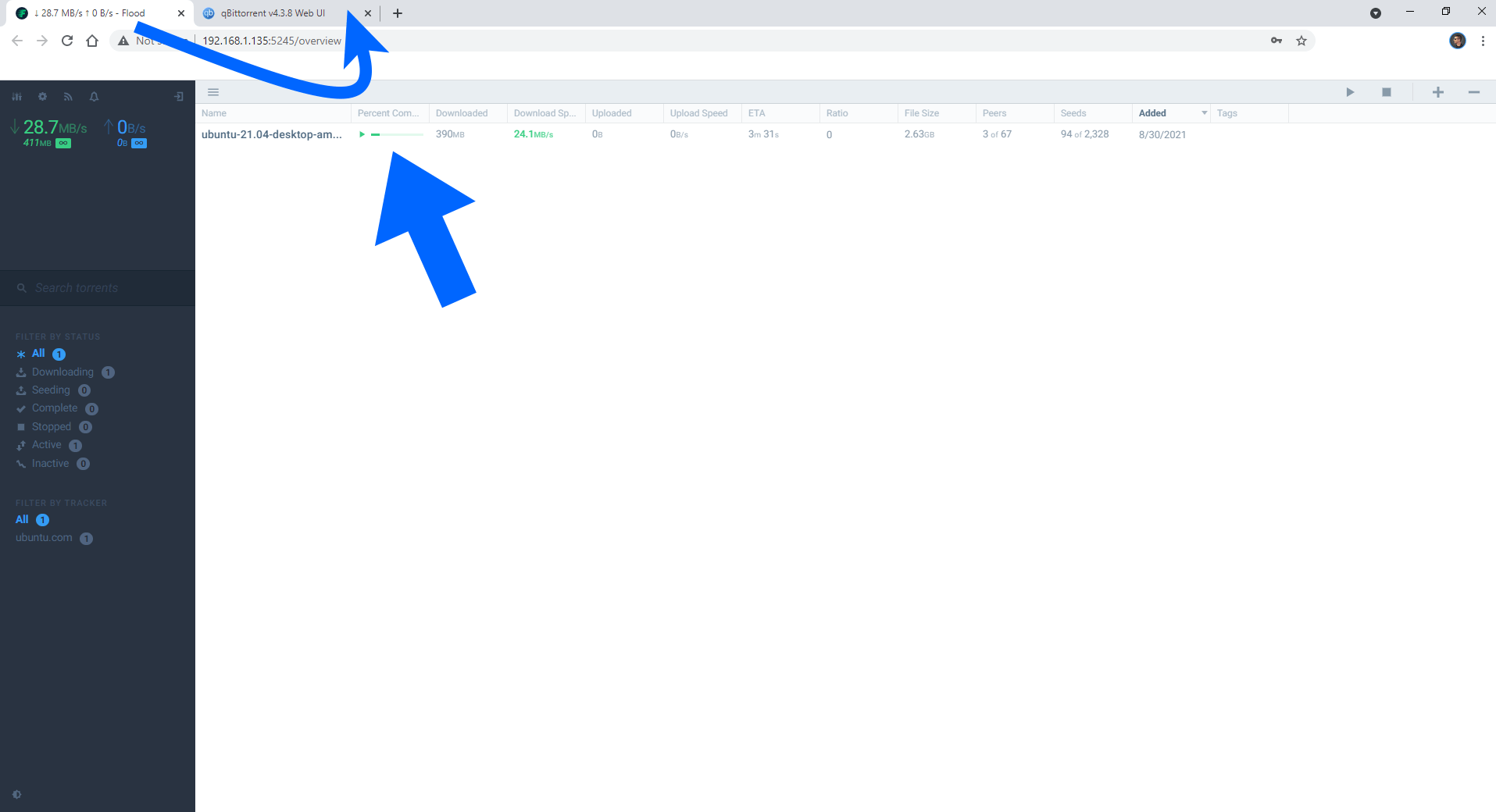
STEP 11
Click the + at the top right of the Flood docker instance. Follow the instructions in the image below.

STEP 12
You can download any torrent you need with confidence directly using Flood’s futuristic GUI instead of the more vintage qBittorrent GUI like on STEP 9. Enter the address of your torrent file and click Add Torrent. qBittorrent will automatically start the download but you will control everything from the Flood graphical interface. Wonderful, right? Follow the instructions in the image below.
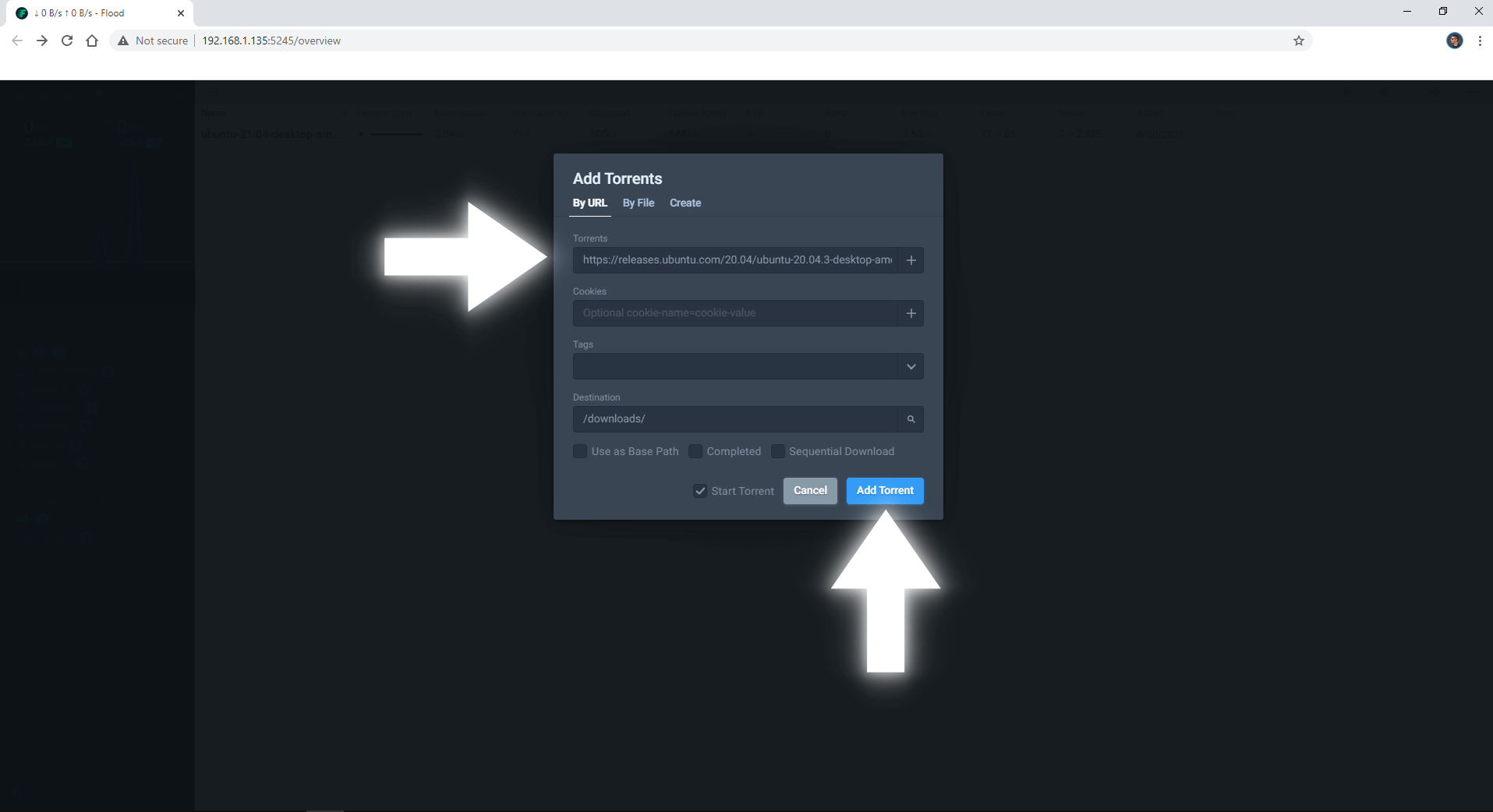
If you are more of a Dark Mode kind of person, you can also change the theme and start using Dark Mode on Flood.

Note: If you want to run the Flood container over HTTPS check How to Run Docker Containers Over HTTPS.
Note: Can I run Docker on my Synology NAS? See the supported models.
Note: How to Back Up Docker Containers on your Synology NAS.
Note: Find out how to update Flood container with the latest image.
Note: How to Free Disk Space on Your NAS if You Run Docker.
Note: How to Schedule Start & Stop For Docker Containers.
Note: How to Activate Email Notifications.
Note: How to Add Access Control Profile on Your NAS.
Note: How to Change Docker Containers Restart Policy.
Note: How to Use Docker Containers With VPN.
Note: Convert Docker Run Into Docker Compose.
Note: How to Clean Docker.
Note: How to Clean Docker Automatically.
Note: Best Practices When Using Docker and DDNS.
Note: Some Docker Containers Need WebSocket.
Note: Find out the Best NAS Models For Docker.
Note: Activate Gmail SMTP For Docker Containers.
This post was updated on Saturday / November 29th, 2025 at 11:17 PM
